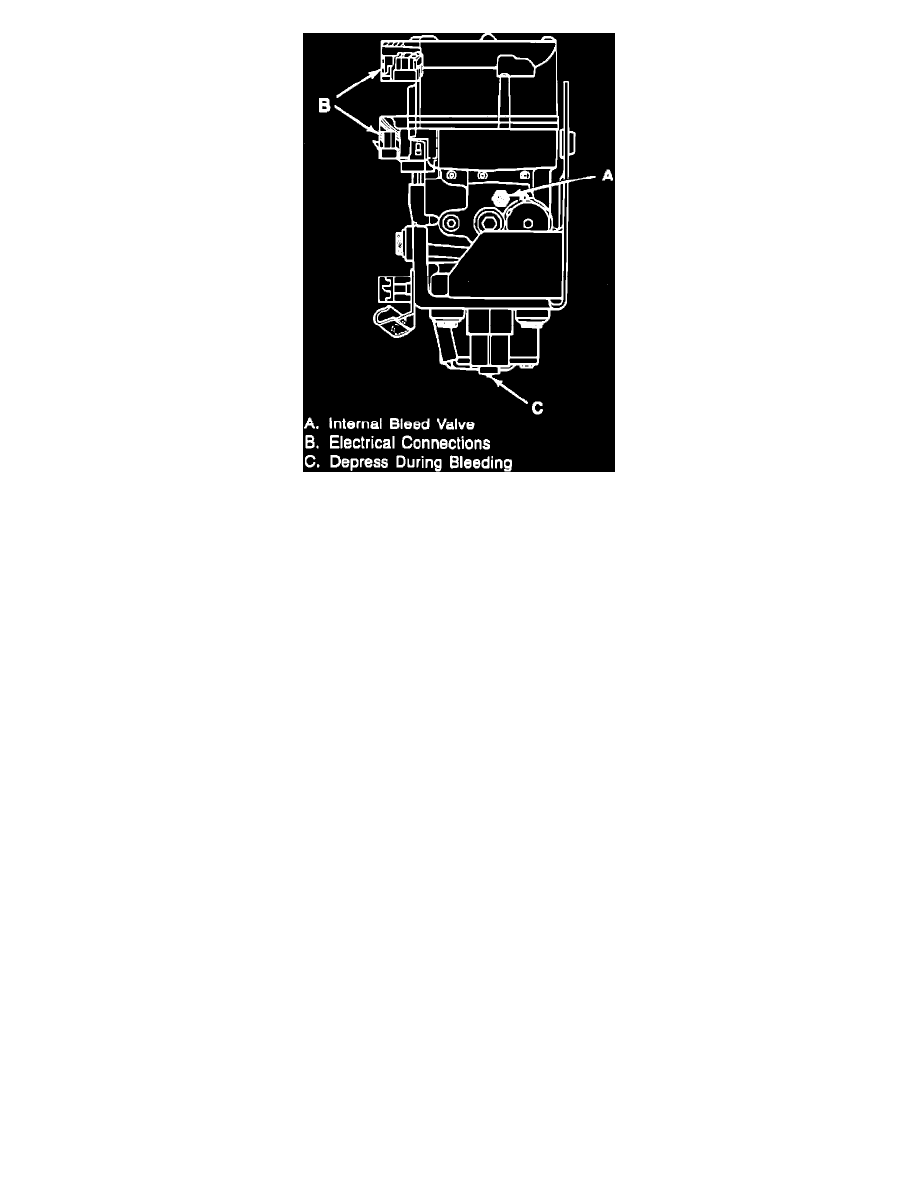C 1500 Truck 2WD V6-262 4.3L VIN Z (1992)

Fig. 59 EHCU/BPMV Module Bleeding
The EHCU Module should be bled after replacement or if trapped air is in the unit. If bleeding is required the module must be bled thoroughly before
the wheel cylinders and calipers.
There are two bleeders on top of the unit that appear to be normal bleeders,
Fig. 59. These are modulator bleeders and must remain closed when the
unit is not pressurized.
The internal bleeders are on either side of EHCU module. The valves are used to open the internal passages within the EHCU module. Both bleed
valves must be rotated 1/4 to 1/2 a turn counterclockwise before beginning the bleed process. The valve on the lefthand side is used for the rear brakes
and the valve on the righthand side is used for the front brakes.
The ignition switch must be in the ``Off'' position or false trouble codes may be stored.
1.
Install combination valve depressor tool No. J 35836 or equivalent to LH high pressure accumulator bleed stem of EHCU module.
2.
Install combination valve depressor tool No. J 35836 or equivalent to RH high pressure accumulator bleed stem of EHCU module.
3.
Install combination valve depressor tool No. J 35836 or equivalent to rear combination valve.
4.
Ensure master cylinder fluid level, fill if required.
5.
Bleed EHCU module as follows:
a.
Slowly depress brake pedal one time and hold.
b.
Open left modulator bleeder, until fluid flows clearly or pedal is depressed, the close left bleeder.
c.
Slowly release brake pedal.
d.
Wait 15 seconds, then repeat a through d until all air is bled from EHCU module.
e.
Close LH internal bleed valve.
Torque bleed valve to 60 inch lbs.
f.
Repeat steps b through e for RH bleed procedure.
g.
Remove three tool Nos. J 35856 or equivalents.
6.
Ensure master cylinder fluid level, fill if required.
7.
Bleed wheel cylinder and calipers.
8.
Turn ignition key to ``On'' position, then perform 3 function test with TECH1 scanner.
9.
Check brake pedal feel and braking performance, repeat procedure if required.
Without ABS System
Manual Bleeding
1.
If vehicle is equipped with power brakes, remove vacuum reserve by applying brakes several times with engine off.
2.
Fill master cylinder reservoirs with suitable brake fluid.
Be sure to always keep master cylinder reservoirs at least half full during entire
bleeding procedure.
3.
If master cylinder is suspected to have air in the bore, it must be bled first, as follows:
a.
Disconnect forward brake pipe connection at master cylinder.
b.
Allow brake fluid to fill master cylinder bore until it begins to flow from forward pipe connector port.
c.
Connect and tighten forward brake pipe at master cylinder.
d.
Depress brake pedal slowly one time and hold, then loosen forward brake pipe connection at master cylinder to purge air from bore. Tighten
